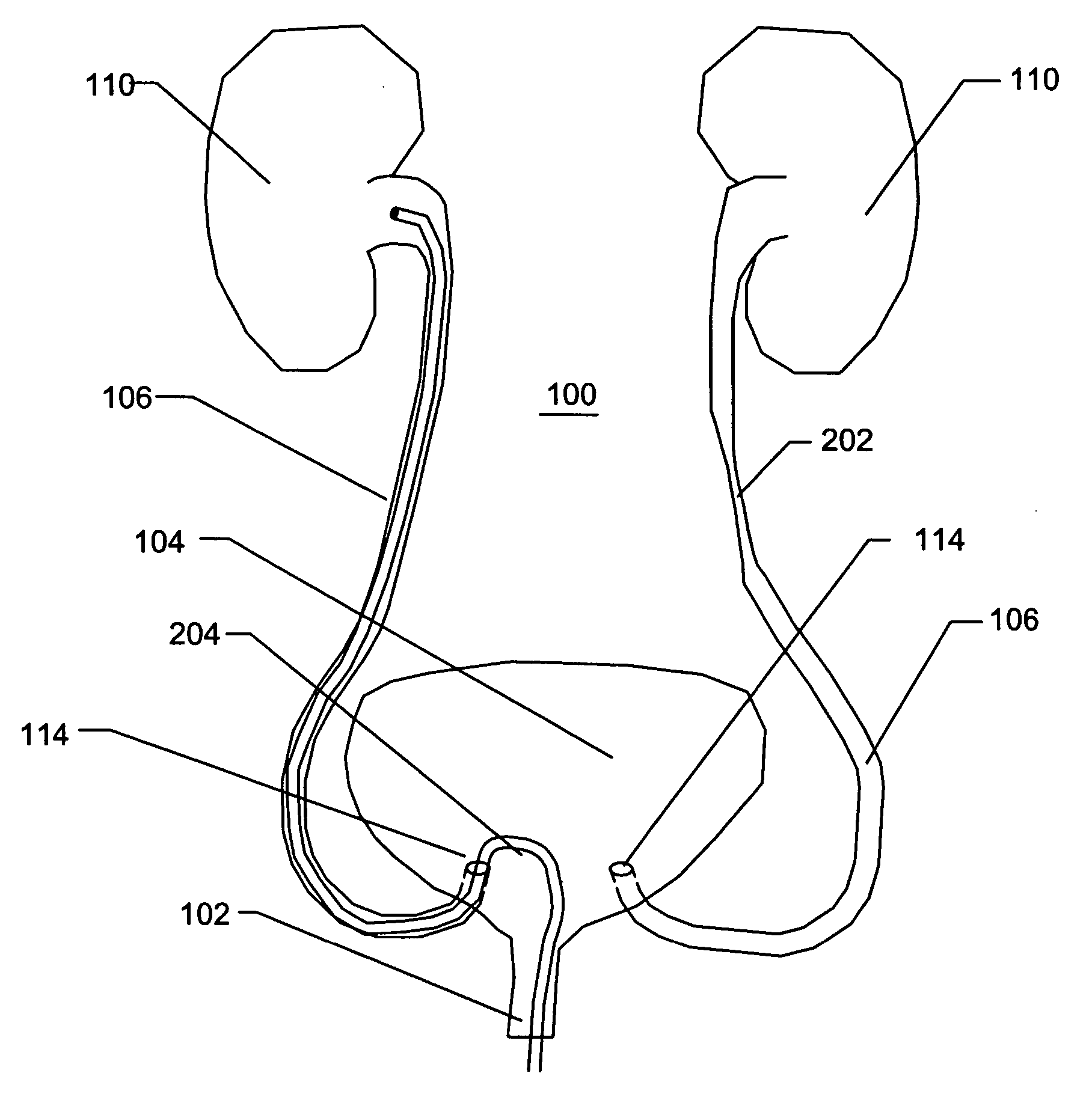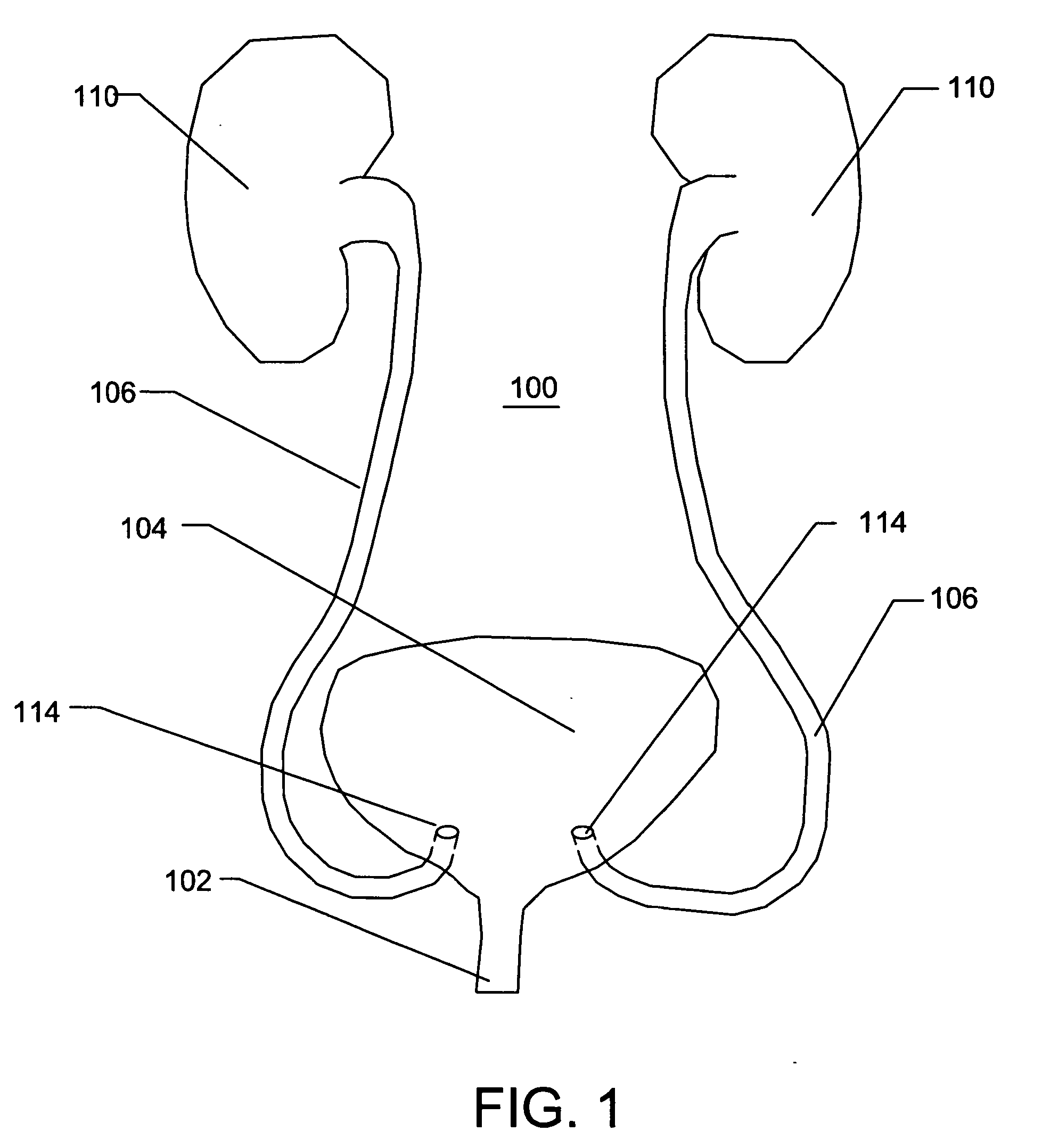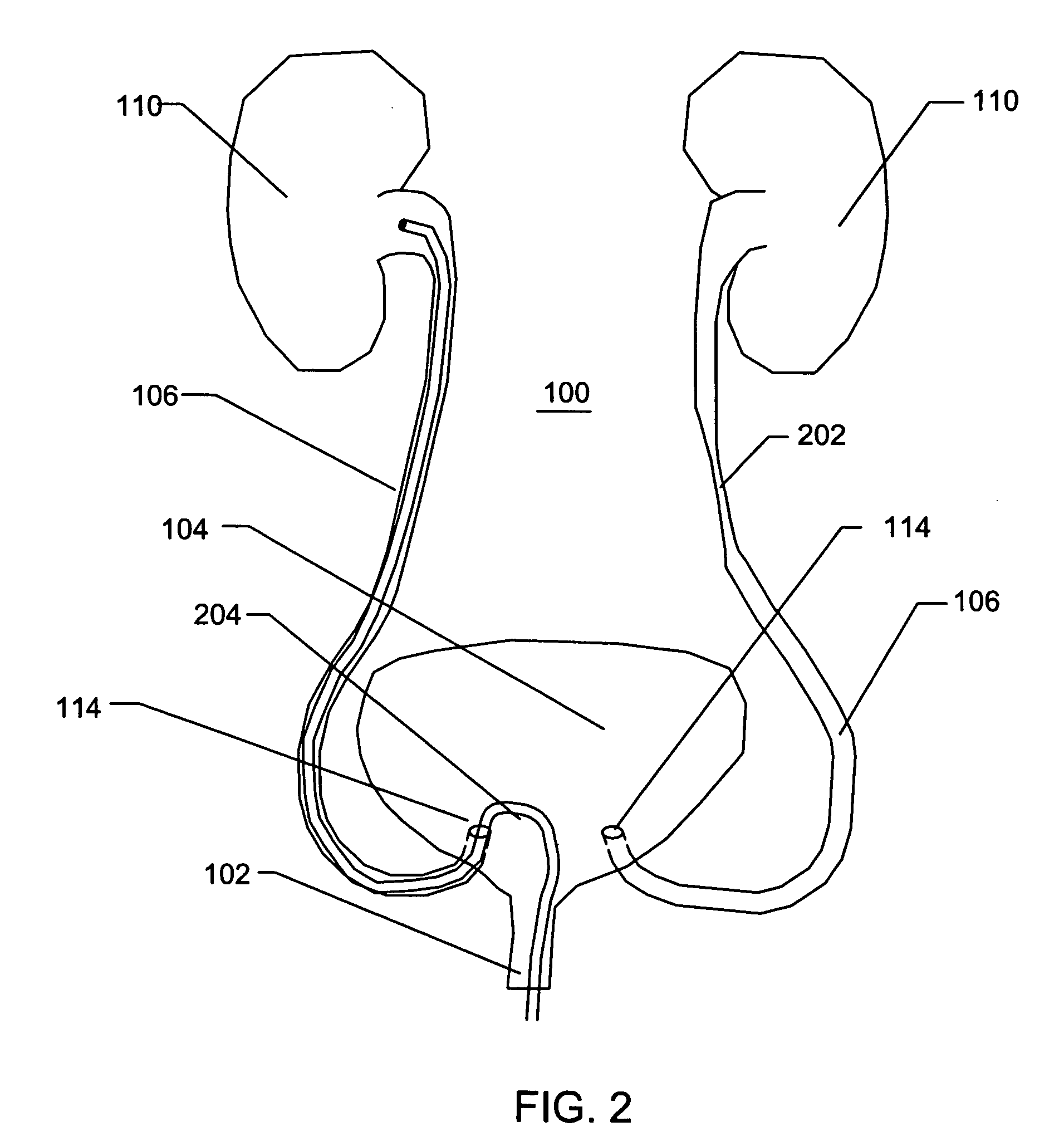Non-expandable transluminal access sheath
a transluminal access and non-expandable technology, applied in the field of medical devices, can solve the problems of loss of strength in the process, damage to fragile structures, direct contact with devices,
- Summary
- Abstract
- Description
- Claims
- Application Information
AI Technical Summary
Benefits of technology
Problems solved by technology
Method used
Image
Examples
Embodiment Construction
[0040] In the description herein, reference will be made to a catheter or a sheath, can generally be described as being an axially elongate hollow tubular, but not necessarily round, structure having a proximal end and a distal end. The axially elongate structure further has a longitudinal axis and has an internal through lumen that extends from the proximal end to the distal end for the passage of instruments, fluids, tissue, implants, or other materials. As is commonly used in the art of medical devices, the proximal end of the device is that end that is closest to the user, typically a surgeon or interventionalist. The distal end of the device is that end is closest to the patient or is first inserted into the patient. A direction being described as being proximal to a certain landmark will be closer to the surgeon, along the longitudinal axis, and further from the patient than the specified landmark.
[0041] The diameter of a catheter or sheath is often measured in “French size” ...
PUM
| Property | Measurement | Unit |
|---|---|---|
| diameters | aaaaa | aaaaa |
| diameters | aaaaa | aaaaa |
| thickness | aaaaa | aaaaa |
Abstract
Description
Claims
Application Information
 Login to View More
Login to View More - R&D
- Intellectual Property
- Life Sciences
- Materials
- Tech Scout
- Unparalleled Data Quality
- Higher Quality Content
- 60% Fewer Hallucinations
Browse by: Latest US Patents, China's latest patents, Technical Efficacy Thesaurus, Application Domain, Technology Topic, Popular Technical Reports.
© 2025 PatSnap. All rights reserved.Legal|Privacy policy|Modern Slavery Act Transparency Statement|Sitemap|About US| Contact US: help@patsnap.com



